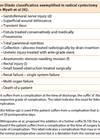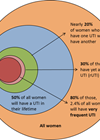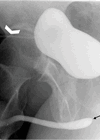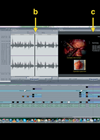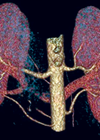Features
Use of Clavien-Dindo classification in urology part 1 – pelvic surgery
There is no widely accepted system to classify postoperative complications. It is necessary to compare the outcome and complications while validating a new surgical procedure or one of the surgical approaches of a particular condition. Several parameters have long been...
What’s in a name?
Kate Granger is a doctor and the founder of the #hellomynameis campaign; she is also a cancer patient. In this article she explains why she started the campaign, and why patient-centred care starts with an introduction. Chris and me the...
The role of specialist therapeutic radiographers in the treatment and care of men with prostate cancer
The Statement of Intent: Cancer Strategy for England: 2015-2020 indicates that the number of people diagnosed with cancer each year will continue to grow rapidly due to the ageing population. There is also a requirement to diagnose and offer patients...
ICS updates on continence care: what’s hot in physiotherapy after 80 years?
Origins of pelvic floor physiotherapy Physiotherapy, and in particular pelvic floor muscle training (PFMT) is nowadays first-line management for pelvic floor dysfunction (PFD). PFMT is originally attributed to Dr Arthur Kegel, hence the term Kegel exercises. Indeed, he was the...
Management of recurrent cystitis
Acute uncomplicated infective cystitis is most commonly seen in healthy women with a frequency of around 0.5-0.7 episodes per woman per year [1]. Around 10% of women report having had an episode of urinary tract infection (UTI) each year and...
What is the role of evidence-based medicine in urology?
The concept of ‘evidence-based medicine’ (EBM) was first developed in the early 1990s and was described as “the conscientious, explicit and judicious use of the current best evidence in making decisions about the care of individual patients” by the recently...
Stereotactic body radiotherapy for oligometastatic disease secondary to urological cancer
The concept of oligometastatic disease is controversial. The traditional model of cancer, which most of us learnt at medical school, is of a disease which starts confined to an organ, for example the prostate, where it can be cured with...
Male urethrograms
An ascending urethrogram is the best initial radiographic technique to image a male patient’s urethra and is indicated for strictures, fistulae, trauma and urethral obstruction [1]. It is quick and straightforward to perform and is performed using an 8Fr Foley...
Surgical video – part 2: Tips on how to edit and create a finished surgical video for teaching or publication
A well-made and informative video can be one of the most valuable promotional tools for a department of urology. Having to resort to an external commercial source to produce a video can be prohibitively expensive. With the extensive computing power...
Sepsis syndrome in urology
There are approximately 100,000 cases of sepsis per year in the UK, of which 37,000 result in death (this is more than prostate cancer, breast cancer, HIV / AIDS and road traffic accidents combined). Urosepsis is defined as sepsis caused...
The emerging role of physician associates in urology
The physician associate (PA) is a new role in the NHS which has expanded across medical and surgical specialties to include urology. In the USA, it has long been an established field of practice where physician assistants work autonomously within...
Radiological appearances of renal vascular anatomical variants
The purpose of this article is to explain and illustrate common renal vascular variants that can be depicted with imaging. Renal vessels commonly present a wide range of variations [1]; before major renal or vascular surgery is undertaken, accurate portrayal...

